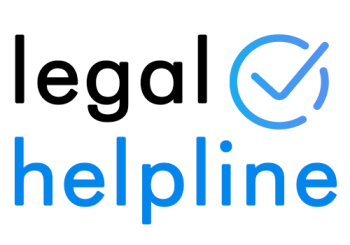This guide will explore when you could potentially be eligible to make a paralysis injury claim. There’s a section dedicated to the criteria your claim needs to meet in order to be valid. In addition, there’s also information on gathering evidence to support your claim.
Paralysis is a serious injury and can have a lasting impact on your life. If you are eligible to proceed with your case, and you succeed, compensation could be awarded to address the way your injury has impacted your quality of life, as well as the pain and suffering you have experienced. Further on in this guide, we explore the way personal injury settlements are valued, and what they could comprise.
Finally, you’ll find out about the advantages of pursuing a claim with one of our No Win No Fee solicitors.
Get in touch with our advisors if you have any questions about your potential serious injury claim. You can:
- Call us on 0333 000 0729
- Use the chat window in the corner
- Contact us via our website

Select A Section
- Eligibility To Make A Paralysis Injury Claim
- Accidents Leading To Paralysis Injuries
- How Do I Show The Other Party Was At Fault?
- Examples Of Paralysis Injury Claim Settlements
- Start A No Win No Fee Paralysis Injury Claim
Eligibility To Make A Paralysis Injury Claim
Your personal injury claim for paralysis must meet the following criteria in order for it to be valid.
- Were you owed a duty of care? – Whoever owes you this duty will differ depending on where and how you were injured. However, you need to have been owed a duty of care by a third party at the time or location of the injury.
- Did they breach this duty? – This is when the party does not uphold their duty of care.
- Were you injured? – You need to show that as a result of the breach, you experienced harm.
The above points lay the foundation of negligence in personal injury claims. If you have evidence of negligence occurring, it may be possible for you to seek compensation by making a serious paralysis injury claim.
Serious Injury Claim Time Limits
To make a paralysis injury claim, you also need to begin proceedings within 3 years of the injury. This is the time limit for personal injury claims as stated in the Limitation Act 1980. However, it’s important to be aware of the time limit exceptions that can apply in some circumstances,
Get in touch with our advisors today if you’re unsure how long you have to seek personal injury compensation.
Accidents Leading To Paralysis Injuries
Below, we have provided information on the third parties who owe a duty of care, the legislation they need to adhere to, and the accidents and subsequent paralysis injuries that could occur if this duty is not upheld.
Paralysis Injuries On The Road
All road users owe one another a duty of care to conduct themselves on the roads in a way that prevents themselves as well as others from experiencing harm or damage. This can be upheld by following the rules in the Highway Code and the Road Traffic Act 1988.
One example of a breach of a driver’s duty of care could be exceeding the speed limit. This could mean they don’t have time to react to something in their path, causing a collision that leads to another driver being paralysed due to an injury they sustain in the resultant road traffic accident.
Paralysis Injuries At Work
In the workplace and as you perform your work-related tasks, your employer owes you a duty of care. What this means is that they must take all reasonable and practicable steps to avoid you, their employee, from sustaining an injury. This duty of care is stated in the Health and Safety at Work etc. 1974.
An employer could be in breach of their duty of care if they offer no training before using specialist equipment. For example, you may be asked to use a forklift truck without being told how to do so. This could lead to a crash that could cause you to sustain hemiplegia or another form of paralysis.
Paralysis Injuries In Falls And Other Public Accidents
The duty of care owed by those responsible for a public space can be found in the Occupiers’ Liability Act 1957. They must take steps to ensure the reasonable safety of members of the public using the space for the purpose it was intended. A failure to do so could lead to a public place accident.
For instance, there could be damaged stairs causing an accident in a shop which present a trip hazard. If no steps are taken to address the hazard, despite the occupier being aware of it, it could result in you falling down the stairs. This could cause a back or neck injury that results in paralysis.
Please get in touch with an advisor if you would like to discuss your potential paralysis injury claim in more detail.
How Do I Show The Other Party Was At Fault?
Gathering evidence can help support a paralysis injury claim as it can demonstrate negligence occurred. There are various forms of evidence you could present. For example:
- Video footage – This can include CCTV footage if your accident was at work or in a public place. In the context of a road traffic accident, you could see if it was captured by a dashcam.
- Photographs – Take pictures of any visible injuries, such as permanent scars, as well as pictures of the scene of the accident.
- Your medical records – These can be used as proof of injury and treatment.
- Contact details for witnesses – A statement can be requested of them at a later date.
Get in touch today to find out more about gathering evidence to support a paralysis injury claim.
Examples Of Paralysis Injury Claim Settlements
Paralysis can often cause permanent disability. The impact on a person’s life after sustaining an injury such as this will differ on a case-by-case basis. For example, some people may experience loss of motor function in certain limbs, whilst others may lose sensation altogether. Due to the variance, the amount they receive in compensation following a successful claim will also be unique.
Generally, though, following a successful paralysis injury claim, settlements can comprise up to two heads of claim. The head of claim that compensates for your pain and suffering caused by your injuries is called general damages.
Legal professionals can make use of certain resources when they’re calculating the value of general damages. One of these resources is called the Judicial College Guidelines (JCG). The publication was updated last in 2022. It contains helpful figures that are based on successful past court cases.
We’ve included some of these guideline compensation brackets in the table below. Please use these figures only as a guide. Your own circumstances need to be accounted for before an accurate calculation can be made.
JCG Figures
| Injury | Description | Guideline Amount |
|---|---|---|
| Multiple Injuries - Serious | A variety of different multiple injuries with monetary expenses incurred as a result. | Up to £1,000,000+ |
| Paralysis - Quadriplegia | Paralysis of upper and lower body. | £324,600 to £403,990 |
| Paralysis - Paraplegia | Paralysis of lower body. | £219,070 to £284,260 |
| Brain damage - Moderately Severe | A very serious disability that may be physical, such as limb paralysis. | £219,070 to £282,010 |
| Back - Severe (i) | Damage to spinal cord and nerve roots. | £91,090 to £160,980 |
| Neck - Severe (i) | A neck injury associated with incomplete paraplegia. | Around £148,330 |
| Special Damages - Lost Income | Under the special damages head of claim, compensation could be awarded if a loss of earnings has been incurred due to time off work to recover from injuries. | Up to £100,000 and above |
There is a second head of claim that you may be eligible to receive. It’s known as special damages. This awards compensation to reimburse you for losses and costs caused by your injuries. You’ll need evidence such as payslips and receipts to support this area of your claim.
Examples of the costs you could claim back include:
- The cost of walking aids/prosthetics.
- Prescription medication costs.
- Loss of earnings.
- The cost of additional care at home.
- Travel costs.
- The cost of adaptations to your property.
Get in touch today to discuss serious injury claim settlements in more detail.
Start A No Win No Fee Paralysis Injury Claim
You can access the services of the solicitors on our panel without paying an upfront fee. This is because they work under a Conditional Fee Agreement (CFA) – a form of No Win No Fee deal. If your claim succeeds, they take a percentage from your compensation. This has a legal cap and is known as a success fee. However, they don’t take it if your claim fails.
How To Talk To Our Team
Get in touch today. Our advisors are available to help you with your potential serious paralysis injury claim. They could also connect you with one of the No Win No Fee solicitors from our panel to begin your claim, if they find you have valid grounds to proceed with your case.
To get in touch, you can:
- Call us on 0333 000 0729
- Use the chat window in the corner
- Contact us via our website
Find Out More About Making A Paralysis Injury Claim
Read more from us:
- Find out how to make a lumbar spine injury compensation claim.
- Read our helpful guide on serious spine injury claims.
- Learn how much compensation you could receive for a broken back and paralysis.
From other sources:
- Paralysis – NHS
- Statutory Sick Pay – GOV.UK
- Workplace health and safety statistics – Health and Safety Executive
Thank you for reading our guide on how to make a paralysis injury claim. If you have any other questions, call an advisor on the number above.
Written by DAB
Edited by MMI




